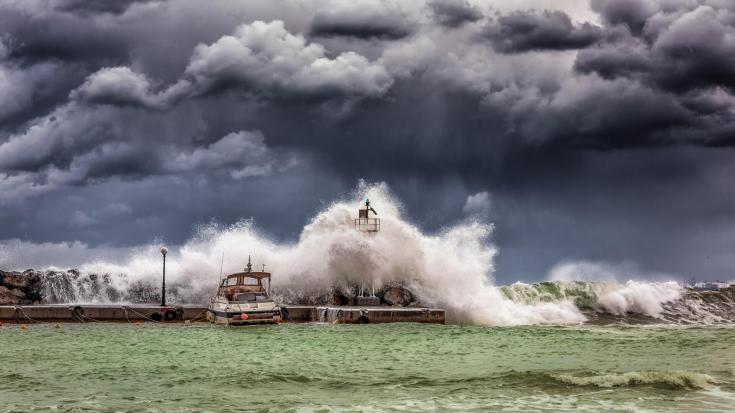Safeguarding cultural heritage from the effects of natural disasters

On early Sunday morning on the 22nd March 2020, amid the Corona-19 crisis, an earthquake with a magnitude of 5.5 Richter hit Croatia’s capital Zagreb. Lasting just a few seconds, it was enough to cause severe damage in the capital, including on historical buildings in the centre of the town. The earthquake in Zagreb, the fire engulfing Notre Dame Cathedral in Paris in 2019 are some of the examples of how natural disasters such as earthquakes, floods, landslides, fires are damaging cultural heritage, sometimes irreversibly. Repairing the historic buildings is a complex and lengthy process and can be even more challenging as in the case of Zagreb, which is under the restrictions of the current pandemic.
The increasing occurrence of natural disasters and their impact on cultural heritage calls for effective policy response. The global agreement on disaster risk management, the Sendai Framework for Disaster Risk Reduction 2015-2030 (Sendai framework), includes among its priorities the substantial reduction of disaster risk for cultural heritage. In line with the objectives of this Framework, in 2016 the European Commission published an Action Plan on the Sendai Framework which provides a more systematic disaster-risk-informed approach in EU policy making and calls for increased consideration of cultural heritage safeguarding in the national disaster risk reduction strategies.
Besides, the EU study 'Safeguarding cultural heritage from natural and man-made disasters' (2018) is a helpful source of information for policy makers in this regard. It presents a comprehensive overview of the existing knowledge, at European and international level, on protecting cultural heritage from the effects of natural disasters and threats caused by human action. Furthermore, it maps existing strategies and tools for disaster risk management in the 28 Member States, and provides evidence-based recommendations with the purpose of supporting European cooperation and improving the integration of cultural heritage in national platforms for Disaster Risk Reduction.
How regions and cities react
European regions and cities also take measures to safeguard heritage assets and resources from the continuous pressures of natural hazards and extreme events. Interregional cooperation provides an opportunity for exchanging solutions in this regard. Interreg Europe Innocastle partners
, which is one of the project partners.Among the themes discussed was the role of cross-sectoral collaboration, particularly around the issues of climate change, as well as the challenge of fighting drought as a consequence of changing climate. More concretely, De Wiersse Estate suffers from the fact that too little water affects the quality of the ponds, moats and canals, as well as the vitality of parks and even the fundaments of monumental buildings.
The neighbouring estates are struggling with the same issues. To address the challenge, the regional water authority 'Waterschap Rijn en IJssel' started a close cooperation with the provincial authority and a group of estate owners to find solutions at both regional and local level. 'I thought it was impressive how the water board was working with estates including De Wiersse to alleviate the impacts of climate change by re-routing rivers' noted Catherine Leonard from National Trust, an advisory partner of Innocastle project.
Moreover, Interreg Europe projects are coordinating their efforts in making regional and local policies more efficient in safeguarding cultural heritage and share this knowledge with other European regions and cities. For example, the three Interreg Europe Innocastle, FINCH, SHARE projects submitted jointly an application to the 2020 edition of the European Week of Regions and Cities for organising an interactive workshop aiming to discuss ideas to catalyse citizen engagement and participation as well as sustainability practices related to cultural heritage.
Can heritage buildings be more resilient to natural disasters?
At a conference on fostering European cooperation for cultural heritage at risk organised in February 2020 under the Croatian Presidency of the Council of the EU, just a few weeks before the Zagreb earthquake, strategic responses on how to make cultural heritage more resilient were outlined. In particular, the need to channel efforts into strengthening the risk management mechanisms was highlighted.
This can be done mainly through application of risk management plans in coordination with structured policies, protection measures and good practices implementation in view of effective prevention. Also, it was noted that this requires coordinated cooperation of all stakeholders: at national, regional and local level, as well as experts in various fields of activity.
